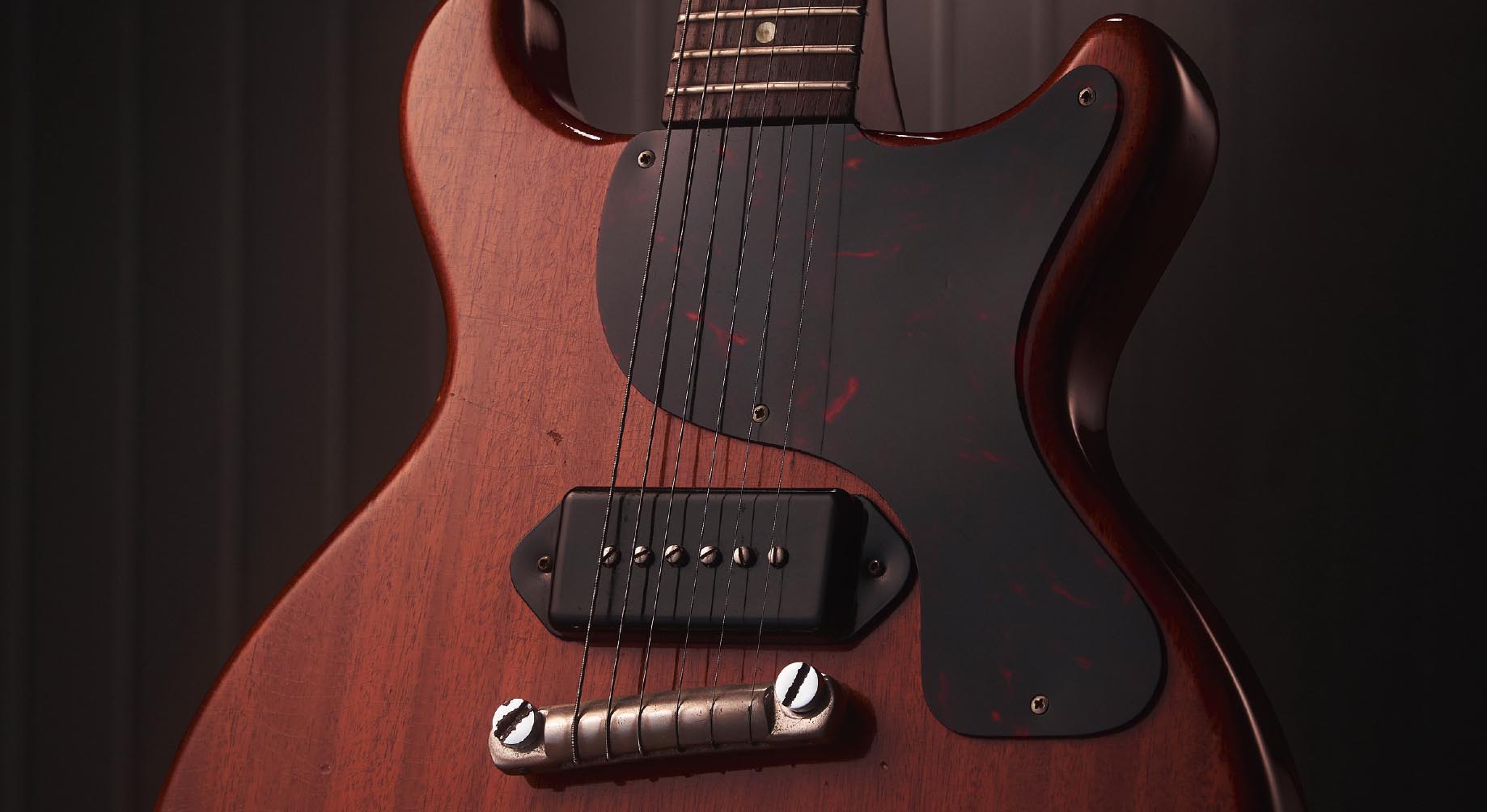
Until 1957, the P-90 was Gibson’s premium pickup, fitted to artist-endorsed jazz boxes and ‘student model’ solidbodies alike.
Even those who couldn’t afford carved tops, fancy inlays or binding weren’t expected to compromise on their tone. And when it came to Juniors, from the earliest single-cut 1954 models to the last of the SG Juniors, one thing remained constant: the pickup was always a P-90 under a plastic cover with pointed ends that inspired the nickname ‘dog ear’. This style of P-90 carried over from Gibson’s archtops.
With nothing to screw into besides the top, the baseplates needed an extension at each end that was bent into an ‘L’ shape. This allowed the magnets and bobbin to sit inside the body, well out of the way of the strings.
For the Junior, Gibson routed a rectangular cavity into the body, and the pickup was effectively sandwiched between the body and cover with a fixing screw at each end. Some suggest this direct coupling is a key component of P-90 tone.
Soap Operatics

The Les Paul Goldtop was Gibson’s first solidbody and there was insufficient clearance for a dog-ear P-90 in the neck position. The design was altered for P-90s to drop into a rectangular cavity, a new cover was created, and the two fixing screws passed through the bobbins.
The cream cover resembled a bar of soap – hence the ‘soap bar’ nickname – and for the pickups to fit the cavity Gibson needed a baseplate without the mounting extensions. This entailed a modification.
Gibson simply snipped the ends off ‘dog-ear’ baseplates and ground off any rough bits. We examined sets of P-90s from 1952, ’53 and ’55 and this was apparent on all three. Given the simplicity of the solution, it’s surprising how few P-90 replicas feature vintage‑correct baseplates.
Gibson seemed to use whatever magnets its supplier sent, but most P-90s had Alnico III magnets until around 1957, when Gibson began transitioning to Alnico V. This explains why the P-90s fitted to late single-cut, double-cut and SG Juniors tend to sound brighter, hotter and more aggressive. Or so we thought…
This writer was recently working on a 1952 Goldtop and noticed that both P-90s seemed slightly closer to the strings than usual. The guitar’s tone was fuller and barkier than most ’50s Goldtops, and it was decided that lowering the pickup heights might benefit the tone.
It turned out there were no shims; instead, rough-looking oversized magnets with crudely snapped ends. The immediate conclusion was that the magnets had been swapped, but we soon discovered otherwise.
Some sources mention it, but it’s not widely known that during ’52 and ’53 some P-90s had oversized magnets. Bars were cut halfway through and snapped to get two bars that were nominally 2 ½ inches long and ½-inch wide. The crucial difference, however, was that they were ³/¹6-inch thick, rather than ¹/8-inch. That’s why the pickup appeared to be set higher than usual.

The gauss meter readings were 400 to 500, which is pretty much what we’d expect from Alnico III – which should be called ‘Alni III’ because there’s no cobalt in the alloy. In addition to increasing the magnetic potential, the thicker magnets contain more iron and that bumps up inductance.
If Gibson was still using up stock of thicker magnets as late as 1957, it’s likely that some Juniors and Specials would have been equipped with thick-magnet P-90s, too
Mario Milan and James Finnerty mention these magnets in their book The Gibson “P.A.F.” Humbucking Pickup and even suggest that the thickness sometimes reached ¼-inch. They also recount that some found their way into PAF humbuckers.
If Gibson was still using up stock of thicker magnets as late as 1957, it’s likely that some Juniors and Specials would have been equipped with thick-magnet P-90s, too. If you happen to own an early Junior and have found it hotter and fatter than most, take a look at the magnets next time you’re changing strings and you might discover the reason.
Vintage Checklist
If you want your Junior, Special or Goldtop to sound convincingly old-school, the coils should be wound with plain enamel wire and they must be unpotted.
Ideally, the DC resistance will be somewhere between 7k and 8k, and the inductance should read between 6.5 and 7.2 Henrys. Alnico III and V magnets are the best starting point for pre- and post-1957 tones respectively, but all grades of Alnico are fair game.







